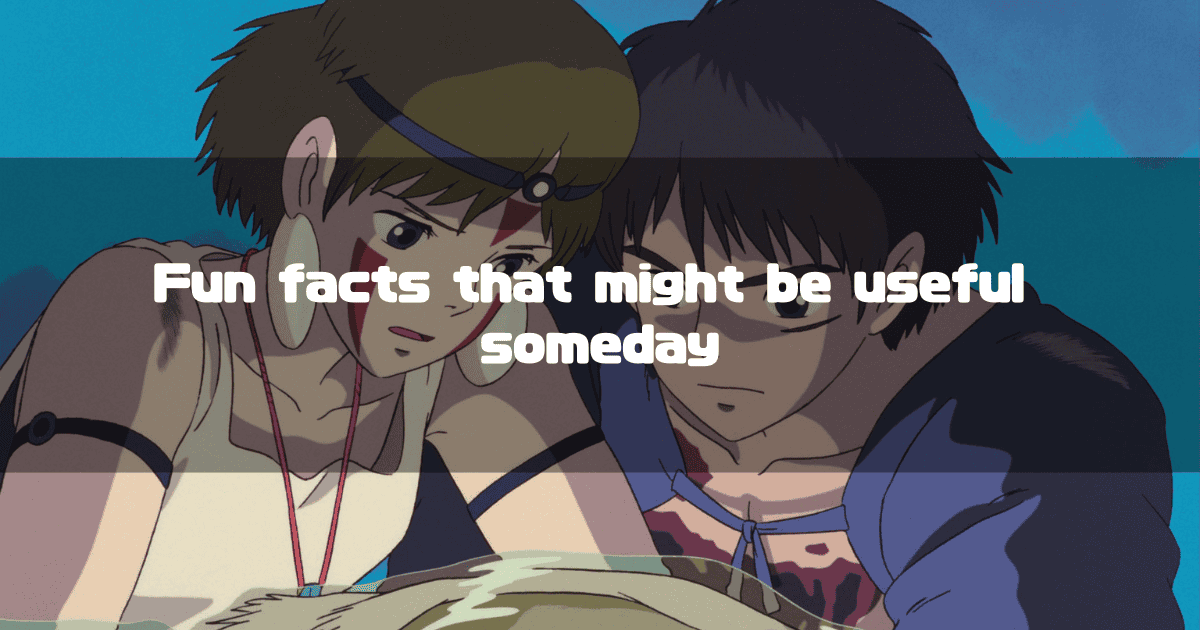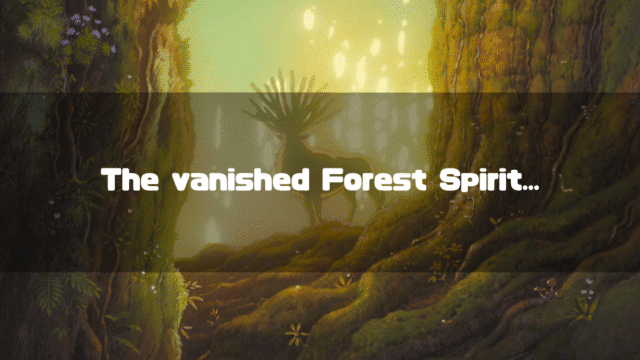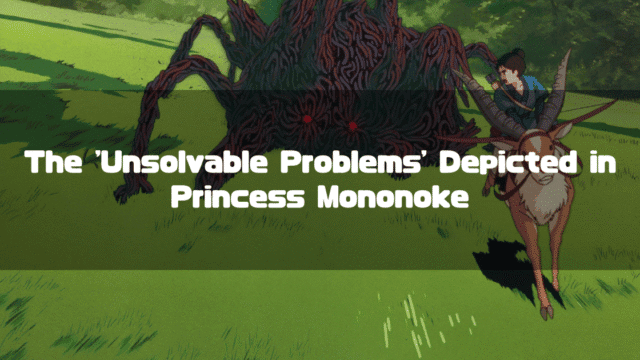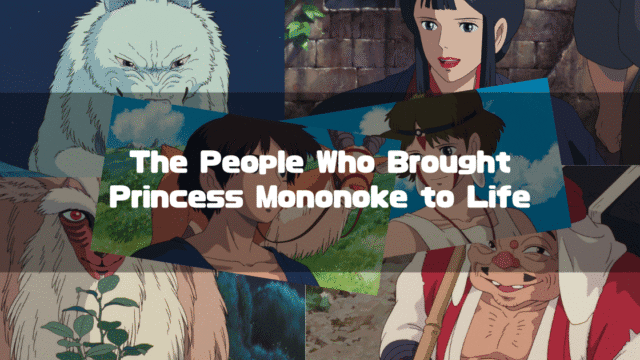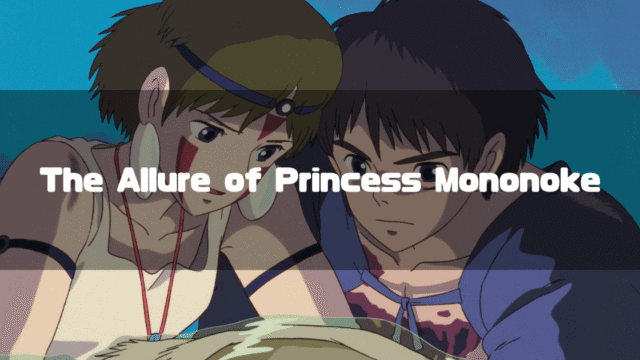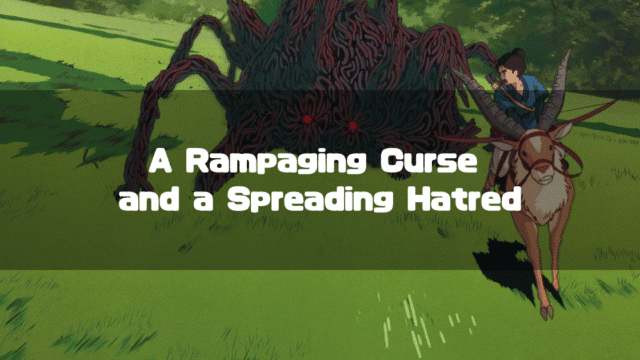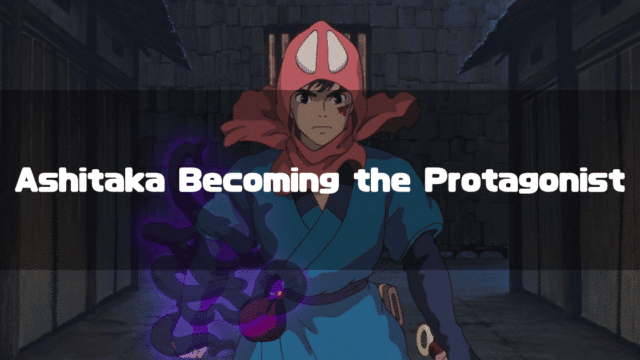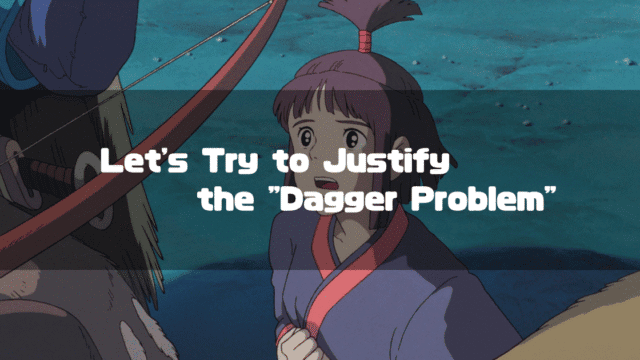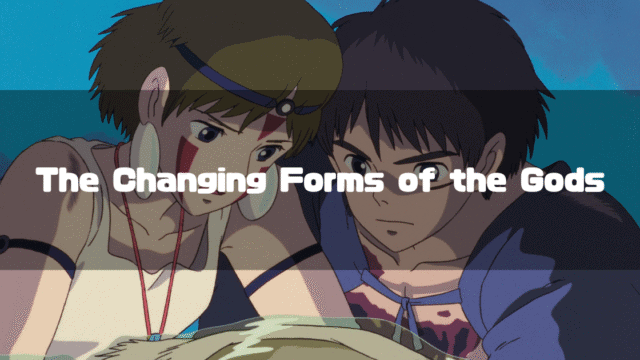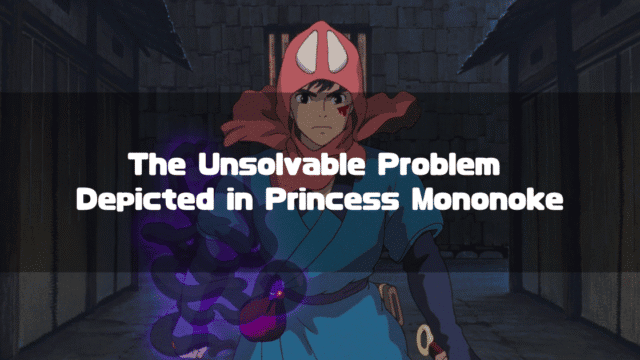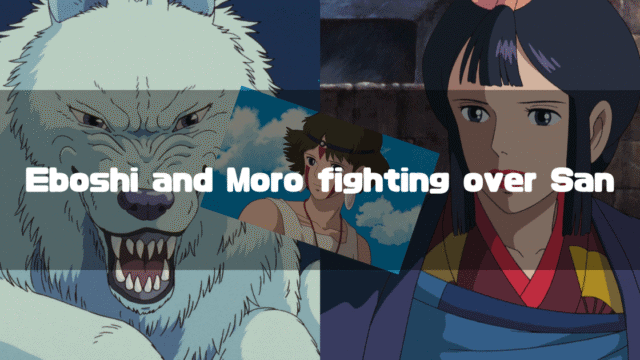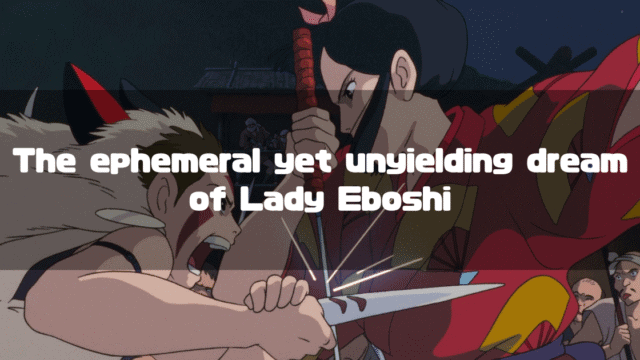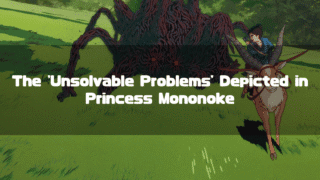Princess Mononoke(Official Studio Ghibli Website) is a feature-length animated film directed by Hayao Miyazaki, released in 1997.
This time, I’d like to put together some trivia and fun facts about Princess Mononoke. While not necessarily essential for a deeper understanding of the main story, I think some of them are quite interesting.
*This article is an English translation of the original Japanese article, 【もののけ姫】雑学&豆知識集-裏話や制作秘話を紹介-.
Let an AI walk you through the highlights of this post in a simple, conversational style.
- Princess Mononoke Trivia & Fun Facts Collection
- There was a “phantom original story” for Princess Mononoke.
- Toshio Suzuki unilaterally announced the title Princess Mononoke.
- The setting was almost outside of Japan.
- They tried to kill Lady Eboshi but couldn’t.
- The red markings on San’s face are tattoos.
- The sick people are cured at the end of the story.
- Did the Kodama become Totoro?
- Moro and Okkoto were once “on good terms.”
- Voice actress Sumi Shimamoto had to do 20 retakes.
- 23 rejected ideas were submitted by Shigesato Itoi before the tagline Live. was decided.
Princess Mononoke Trivia & Fun Facts Collection
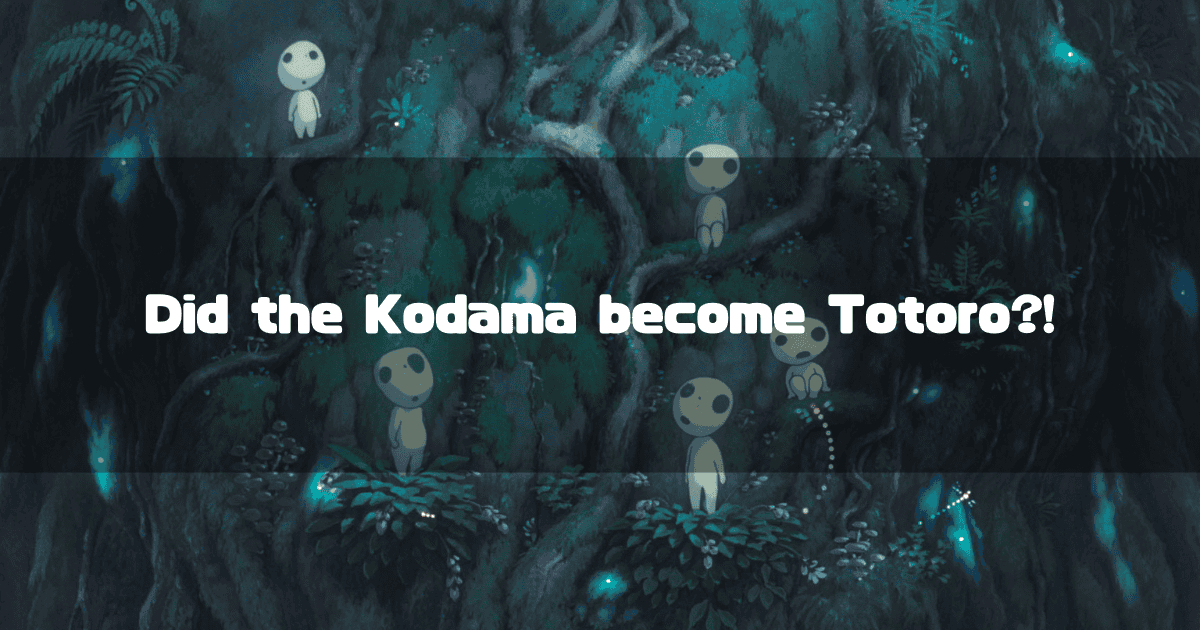
There was a “phantom original story” for Princess Mononoke.
The Princess Mononoke we know today is “a story about the protagonist Ashitaka, who, after receiving an unjust curse and being exiled from his homeland, meets San, known as ‘Princess Mononoke,’ and discovers a new world.”
However, the Princess Mononoke envisioned as the next work after Porco Rosso (1992), the manga version of Nausicaä of the Valley of the Wind (completed in 1994), and Whisper of the Heart (1995, for which Hayao Miyazaki did the storyboards), was not such a story. (At this time, Boro the Caterpillar(Ghibli Museum Official), later released at the Ghibli Museum, was also in conception).
The earliest concept for Princess Mononoke has now been made into a picture book. It was a story where “a samurai defeated in battle is captured by a mononoke (a giant cat-like creature similar to Totoro) but is spared on the condition that he marries off his daughter. Eventually, his third daughter (San-no-hime, the third princess) is sent to be the bride…”
The picture book version of Princess Mononoke is based on image boards drawn in 1980, and was originally intended to be the basis for a new Princess Mononoke film.
However, because it was based on something created over a decade earlier, it was extremely difficult to make it withstand the test of time. As a result, Hayao Miyazaki’s story creation made slow progress, and according to Toshio Suzuki, he was in a state that could be called a “slump.”
It was then that the offer to produce a music video for CHAGE and ASKA’s song “On Your Mark” came along. This seems to have been a good change of pace, and after finishing the music video, Hayao Miyazaki decided to completely restart the Princess Mononoke project from scratch, which led to the Princess Mononoke we know today (The name “San” from the “Third Princess” in the picture book version was retained).
However, not all old things are useless, and it seems that The Journey of Shuna(シュナの旅) had a strong influence on the production of the Princess Mononoke we know today. The Journey of Shuna is a picture story published in 1983, telling the story of “Prince Shuna of a small country who rides a Yakul on a journey to bring back wheat from the land of the god-folk” (created by Hayao Miyazaki, of course).
The Journey of Shuna is very interesting, and I recommend giving it a read.
- “Ghibli Textbook 10: Princess Mononoke(ジブリの教科書10 もののけ姫, in Japanese)”
- “How Princess Mononoke Was Born(「もののけ姫」はこうして生まれた, in Japanese)(DVD)”
Toshio Suzuki unilaterally announced the title Princess Mononoke.
As mentioned earlier, there was a “phantom original story” for Princess Mononoke that was made into a picture book, and the main characters of that story were the “Third Princess” and the “giant cat-like mononoke” she was unwillingly married to. Therefore, the title Princess Mononoke was natural. However, the protagonist of the Princess Mononoke we know today is clearly Ashitaka.
And Hayao Miyazaki had actually considered another title besides Princess Mononoke: “The Legend of Ashitaka” (Ashitaka Sekki).
“Sekki” is a word and kanji character created by Hayao Miyazaki, meaning “a story passed down from ear to ear, hidden in the grass.” It is said that “sekki” is written as follows (The kanji notation is based on “Ghibli Textbook 10: Princess Mononoke.” The two “mountain-like” parts in the character for “setsu” are the old form of the “grass radical”):
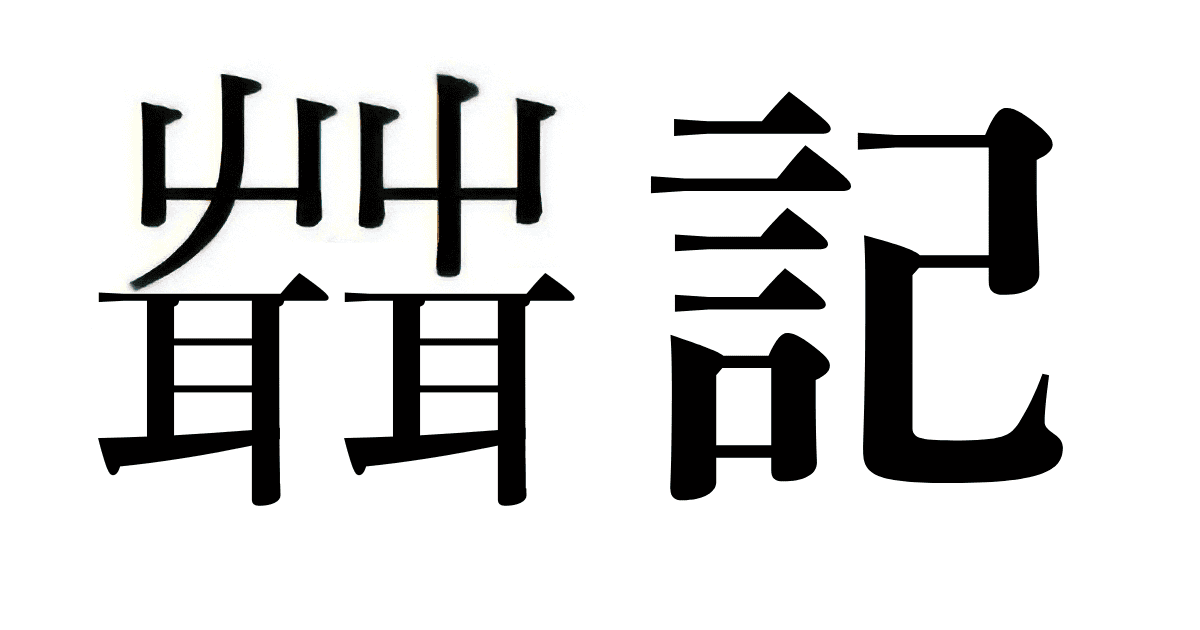
However… Producer Toshio Suzuki, who thought the title Princess Mononoke was better, unilaterally announced the title Princess Mononoke without consulting Hayao Miyazaki in a special report released in conjunction with the My Neighbor Totoro broadcast on Friday Road Show on December 22, 1995.
Miyazaki, who found out about this later, reportedly asked Toshio Suzuki in a loud voice, “Hey, did you release that?!” and when he heard the reply, “I did,” he simply returned to his room.
As a result, the film’s title became the Princess Mononoke we know, and the title The Legend of Ashitaka was left as the title of a musical piece by Joe Hisaishi (the song that plays right after Ashitaka leaves his village).
- “Ghibli Textbook 10: Princess Mononoke(ジブリの教科書10 もののけ姫, in Japanese)”
- “How Princess Mononoke Was Born(「もののけ姫」はこうして生まれた, in Japanese)(DVD)”
The setting was almost outside of Japan.
As the production of the storyboards for Princess Mononoke progressed, Producer Toshio Suzuki began to worry about one of the story’s themes: “killing the forest god.”
He thought that in a rich land with a lot of rain like Japan, the very idea of “killing the forest” might not be plausible. He seems to have consulted Isao Takahata about this, who also agreed with his doubts. Looking back, this seems like a very reasonable concern.
Moreover, when he presented this doubt and the suggestion that “it might be better to set the story outside of Japan to give it universality” to Hayao Miyazaki, Miyazaki reportedly offered no particular resistance and, in fact, casually proposed revisions.
Unfortunately, it is not clear what happened after that, but in the end, Princess Mononoke was set in the Japan we know, during the Muromachi period.
- “Ghibli Textbook 10: Princess Mononoke(ジブリの教科書10 もののけ姫, in Japanese)”
They tried to kill Lady Eboshi but couldn’t.
The ending of the first storyboard that Hayao Miyazaki completed was too abrupt for Producer Toshio Suzuki and left him wanting more (from a modern perspective, that “abrupt ending” is extremely intriguing). So, Toshio Suzuki suggested, “Shouldn’t we kill Lady Eboshi?” to which Hayao Miyazaki responded with great enthusiasm, proposing “various ways to kill Lady Eboshi” in return.
The above exchange took place on a train on the way to Joe Hisaishi’s studio, and in the production documentary How Princess Mononoke Was Born, you can see Hayao Miyazaki cheerfully telling Joe Hisaishi at the studio, “It’s been decided that she will die.”
However, as we know, Lady Eboshi did not die in the end, but merely lost an arm. When Hayao Miyazaki handed the revised storyboard to Suzuki, he reportedly said, “Suzuki-san, I’m sorry, but I can’t kill Eboshi.”
- “Ghibli Textbook 10: Princess Mononoke(ジブリの教科書10 もののけ姫, in Japanese)”
- “How Princess Mononoke Was Born(「もののけ姫」はこうして生まれた, in Japanese)(DVD)”
The red markings on San’s face are tattoos.
San has very memorable red markings on her face, but these are actually tattoos, not paint.
This fact can be confirmed, for example, in the production documentary How Princess Mononoke Was Born. In the part explaining the finishing (coloring on cels) and color design, the narration mentions “crimson tattoos to express her fierce nature.”
However, it is unknown when these tattoos were done.
- “How Princess Mononoke Was Born(「もののけ姫」はこうして生まれた, in Japanese)(DVD)”
The sick people are cured at the end of the story.
Early in the story, when Ashitaka visits Iron Town, Lady Eboshi guides him to a “secret garden,” where there are people wrapped in bandages.
Although not explicitly stated in the film, those people are patients with Hansen’s disease (leprosy). This fact can be confirmed, for example, in the Asahi Shimbun article, “Hayao Miyazaki talks about Princess Mononoke and Hansen’s disease: ‘A free-spirited period drama’.”
At the end of the story, the Forest Spirit, having regained its head, is illuminated by the morning sun and collapses, “exploding.” The impact of this affects the Forest Spirit’s woods and the people of Iron Town.
As a result, the forest makes a slight recovery, but at the same time, the bandages of the sick people come off, and they are shown to be cured (in the scene where Kouroku says, “The Forest Spirit was a flower-blooming old man”).
- “‘Hayao Miyazaki talks about Princess Mononoke and Hansen’s disease: ‘A free-spirited period drama’,’ Asahi Shimbun, in Japanese”
Did the Kodama become Totoro?
In almost every Miyazaki work, there is some kind of “cute being.” In Princess Mononoke, that was undoubtedly the Kodama. There is a theory that those Kodama later became Totoro (although it’s debatable whether this can be called a “secret setting”).
According to “The Art of My Neighbor Totoro,” the initial setting for Totoro’s (the large Totoro) age is 1,302 years old. If that’s the case, the individual who appeared in My Neighbor Totoro would have existed during the time of Princess Mononoke, and there should have been many other individuals as well. However, nothing that looks like Totoro appears in Princess Mononoke.
Watching the production documentary How Princess Mononoke Was Born, it seems this fact also bothered Director Miyazaki. In a scene where he is discussing the end of the movie with the staff, he said the following:
“This was at the strong request of Futaki-san. She asked me to put just one small Kodama walking around at the very end. That’s what changed into Totoro.” “That makes everything consistent.”
(Original Text in Japanese)
「これはもう、二木さんたっての希望で、ちびで一匹でいいから、コダマが、ノコノコ歩いてるやつ、最後に入れてくれって。それがトトロに変化した。」「そうすると首尾一貫するんです。」
“Futaki-san” is believed to be the animator Makiko Futaki (June 19, 1957 – May 13, 2016).
Personally, I don’t think you can call this a “setting,” but it’s certain that this was the feeling he had.
- “The Art of My Neighbor Totoro, in Japanese”
- “How Princess Mononoke Was Born(「もののけ姫」はこうして生まれた, in Japanese)(DVD)”
Moro and Okkoto were once “on good terms.”
The voice of Moro, San’s adoptive mother, was provided by Akihiro Miwa. Because Miwa’s understanding of the character was extremely accurate, the voice recording sessions went very smoothly.
The production documentary How Princess Mononoke Was Born shows Director Miyazaki enjoying the voice recording sessions.
In the documentary, there is a scene showing the voice recording for the reunion of Okkoto and Moro. To convey the nuance of Moro’s lines, Director Miyazaki tells the sound director that Moro and Okkoto were actually “on good terms” in the past and separated 100 years ago.
When Akihiro Miwa heard this from the sound director, he was delightfully surprised, saying, “What? That happened? The boar and the dog. Hahaha!”
- “How Princess Mononoke Was Born(「もののけ姫」はこうして生まれた, in Japanese)(DVD)”
Voice actress Sumi Shimamoto had to do 20 retakes.
Toki, one of the women in Iron Town (Kouroku’s wife), is voiced by Sumi Shimamoto. Shimamoto is also known for voicing Clarisse in The Castle of Cagliostro and Nausicaä in Nausicaä of the Valley of the Wind.
When Ashitaka visits the site where the giant bellows (a device that sends air into the iron furnace) are being operated, Toki says, “You might as well take over!” This line, in fact, was retaken 20 times.
Hayao Miyazaki’s feedback to Shimamoto was, “You know, people don’t just feel overly grateful when someone comes to help them a little with their work.“
Furthermore, his comments “You think you have to be kind to the role” and “Shimamoto-san, you think it’s your job to be kind to everyone, that’s the problem. Treat him coldly.” can be seen as hints to understanding Miyazaki’s intention.
If we recall the context of that scene, it started when the women were peeking at the men welcoming Ashitaka at a meal and said, “Come over to our place.”
Ashitaka took them up on their offer and visited “their place,” but the women probably just meant for him to “show his face a little,” and it wouldn’t have mattered if he didn’t come. He would just be in the way if he did.
However, Ashitaka at that time was emotionally disturbed after Lady Eboshi casually dismissed his situation and after seeing the sick people living earnestly despite suffering from “Hansen’s disease.” It seems he had entered a “let’s do something good mode.” That’s why he started to pushily “help out” where it wasn’t needed.
Toki, instantly sensing Ashitaka’s “let’s do something good mode,” probably decided to “let him help for a bit and then send him away quickly,” and said, “You might as well take over!”
However, perhaps due to the characteristics of Shimamoto’s voice or her own personality, it might have been difficult to express that nuance.
Also, the fact that Toki had a very positive-looking smile in this scene might have confused the situation. It would be difficult to read the nuance that “Ashitaka is in the way” from that expression (the people of Iron Town all carry internal suffering that contrasts with their superficial cheerfulness and liveliness). Hayao Miyazaki, while racking his brain, said, “I don’t think it’s that difficult,” but personally, I think it is “that difficult.”
Incidentally, Yuriko Ishida, who voiced San, also had a very hard time with the voice recording, and said the following at a stage greeting:
“I really thought I was going to be fired at first.” “The director always gave me very detailed and delicate instructions, but there were so many of them that I got confused…”
(Original Text in Japanese)
「ほんとに、おろされるとおもいました、最初は。」「監督は、とてもきめこまかく、繊細な、指示をいつもしてくださったのですが、それが多すぎて、わけが分からなく・・・」
It seems there were many struggles during the voice recording for Princess Mononoke.
- “How Princess Mononoke Was Born(「もののけ姫」はこうして生まれた, in Japanese)(DVD)”
- “‘20 Retakes for One Line… The ‘Voice Actress Loved by Ghibli’ Talks About ‘The Hardest Part of Princess Mononoke’,’ Bunshun Online, in Japanese”
23 rejected ideas were submitted by Shigesato Itoi before the tagline Live. was decided.
Ghibli films have extremely memorable taglines. For My Neighbor Totoro and Grave of the Fireflies, the unified tagline was “We’ve come to deliver something you’ve forgotten.” For Kiki’s Delivery Service, it was “I was a little depressed, but I’m doing fine.” These were created by Shigesato Itoi.
For Princess Mononoke, the tagline was also requested from Shigesato Itoi.
Until Princess Mononoke, Itoi’s proposed taglines were generally accepted on the first try, but the situation was completely different for Princess Mononoke.
According to “Ghibli Textbook 10: Princess Mononoke,” 23 ideas were submitted before they arrived at the famous tagline, Live.
However, on the other hand, in How Princess Mononoke Was Born, Toshio Suzuki says, “We had him write about 50.”
Personally, I’d like to believe the “23” figure. I think Suzuki’s memory might be based on the number of back-and-forth exchanges, which could have been around 50 (this is just my speculation).
In any case, it seems certain that Shigesato Itoi was in a state of anguish. To me at that time, Shigesato Itoi was “the guy from the Tokugawa buried treasure show,” so it’s personally poignant to think that he was going through such struggles behind the scenes.
- “Ghibli Textbook 10: Princess Mononoke(ジブリの教科書10 もののけ姫, in Japanese)”
- “How Princess Mononoke Was Born(「もののけ姫」はこうして生まれた, in Japanese)(DVD)”
About the Author
Recent Posts
- 2025-10-15
Indiana Jones and the Dial of Destiny(2023):Historical Background-WWII, the Real Dr. Schmidt, the Siege of Syracuse, and the Antikythera Mechanism - 2025-10-08
Why Does Children Who Chase Lost Voices Feel So Ghibli-esque? [Makoto Shinkai’s “Tale of Farewell”] - 2025-10-07
5 Centimeters per Second: Characters, Voice Actors, Character Analysis and Character Map - 2025-10-06
5 Centimeters per Second: Full Synopsis, Analysis, Ending Explained & Character Map (Spoilers) - 2025-10-04
5 Centimeters per Second Is Neither Depressing Nor Terrible: A Positive Interpretation of the Film

